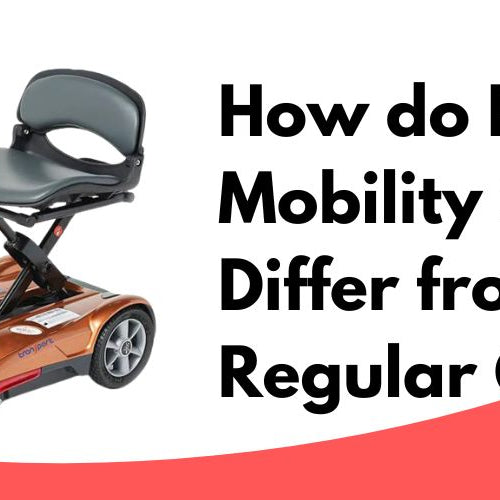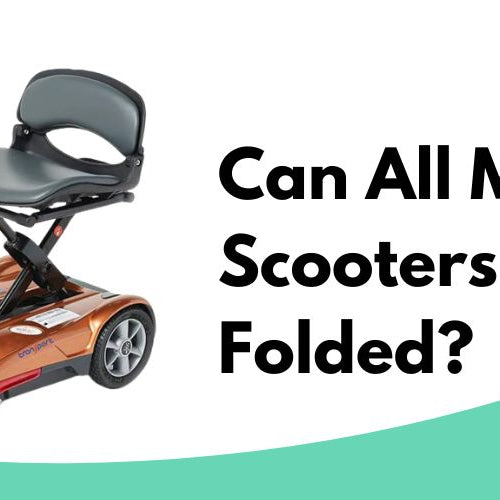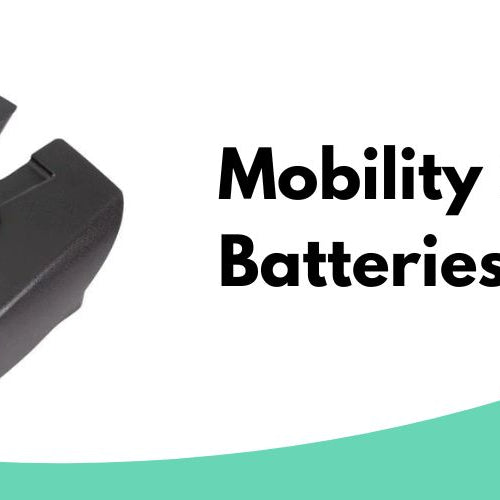With the increasing popularity of mobility scooters among the elderly and those with mobility issues, one common question that arises is whether these convenient devices are waterproof. This is a critical consideration for potential buyers, as they want to ensure that their investment will be able to endure a variety of weather conditions, particularly rain. In this article, we delve into the topic of waterproof mobility scooters, discussing factors that determine their water-resistant capabilities while providing relevant supporting information.
To assess the waterproof capabilities of mobility scooters, we first need to understand the various components that make up these devices, including the frame, motors, batteries, and electronic control systems. Each element plays a crucial role in the overall performance of the mobility scooter, and consequently, each part's resistance to water can significantly impact the device’s functionality. Manufacturers often use specific materials, design elements, and protective measures to enhance water resistance; however, it is crucial to note that complete waterproofing might not always be possible.
When shopping for a mobility scooter, it's essential to consider the manufacturer's recommendations and specifications for water exposure. While some models offer better protection against rain and splashes, it is vital to remember that most mobility scooters are primarily designed to handle light to moderate showers, rather than being fully submerged in water. Nonetheless, understanding the device’s limitations can help users maintain their mobility scooters in optimal working condition and promote their longevity.
Are Mobility Scooters Waterproof?
Mobility scooters are designed to provide individuals with limited mobility the freedom to move around comfortably. However, one question that often arises is whether these scooters are waterproof. In this section, we'll discuss the water resistance of mobility scooters and how to understand their IP ratings.
Water Resistance vs. Waterproof
It's essential to clarify the difference between water resistance and waterproof when discussing mobility scooters. A water-resistant mobility scooter is designed to withstand light rain or splashes, but it is not intended to be submerged in water or exposed to heavy rain for extended periods. On the other hand, a waterproof mobility scooter implies that it can be fully submerged without any damage to its components.
To date, a fully waterproof mobility scooter does not exist. Mobility scooters are electric machines designed to help individuals move around, but they are not engineered to function in water or heavy rain. As a result, they should not be left in the rain, as doing so can lead to electrical issues.
Understanding IP Ratings
Since mobility scooters are not waterproof, it's crucial to understand their Ingress Protection (IP) ratings. An IP rating is a two-digit code that indicates the level of protection against solid objects and water ingress. The first digit (from 0 to 6) represents protection from solid objects, while the second digit (from 0 to 9) denotes protection from water ingress.
For example, an IP54-rated mobility scooter would be protected from limited dust ingress and water splashes from any direction. In contrast, an IP65-rated scooter would be dust-tight and protected against water jets. Note, however, that even higher IP ratings do not indicate that a mobility scooter is waterproof or submersible in water.
In summary, although mobility scooters can handle some exposure to water, they are not waterproof. Users should avoid exposing their scooters to water in order to protect the electrical components and ensure the ongoing usability and longevity of their devices.
Effects of Water on Mobility Scooters
Electrical System
Water can negatively impact a mobility scooter's electrical system. As the scooter is powered by electronic components, direct or prolonged exposure to water, dampness, or high levels of humidity can lead to malfunction. Specifically, corrosion may occur on the electronic components, causing them to fail and potentially rendering the scooter inoperable.
Mechanical Components
Apart from the electrical system, a mobility scooter's mechanical components can also suffer from water exposure. The frame of the scooter, for instance, may experience rust and corrosion, weakening its structural integrity. Rusted or corroded mechanical parts may affect the scooter's performance and require repairs or replacements.
Battery Life
A mobility scooter's battery life can be impacted by exposure to water. Moisture entering the battery compartment can potentially cause electrical shorts, reducing the battery's lifespan and efficiency. To prevent water damage to the battery and maintain optimal performance, it is essential to keep the scooter dry and stored in a moisture-free environment when not in use.
To maintain your mobility scooter in the face of potential water exposure:
- Thoroughly dry your scooter with a towel if it comes into contact with water.
- Wipe down all surfaces of the scooter to ensure no moisture remains.
- Store the scooter in a dry, moisture-free environment.
- Regularly inspect and maintain the scooter's mechanical components and electrical system.
In summary, mobility scooters are not considered waterproof since their electronic components and mechanical parts can be negatively affected by water exposure. Taking proper care of your mobility scooter and protecting it from water-related damage is crucial to ensuring its performance and longevity.
Safeguarding Your Mobility Scooter
While mobility scooters are designed to handle various weather conditions, they are not completely waterproof. Exposure to water or excess moisture can damage the scooter's electrical components, causing malfunctions or, in extreme cases, rendering it inoperable. Safeguarding your mobility scooter involves proper storage, regular maintenance, and investing in protective accessories to ensure its longevity and reliability.
Proper Storage
Ensuring your mobility scooter is stored in a dry and safe environment is crucial. Follow these storage guidelines:
- Park your scooter in a covered area, such as a garage or shed, to protect it from direct exposure to rain, snow, or excess humidity.
- Avoid leaving it outdoors for extended periods, particularly during inclement weather or when not in use.
- If a covered area is not available, consider using a waterproof cover specifically designed for mobility scooters to shield it from the elements.
Regular Maintenance
Routine maintenance is vital for keeping your mobility scooter in optimal working condition. Some maintenance tips include:
- Check the scooter's owner's manual for a recommended maintenance schedule and follow it diligently.
- Inspect the scooter regularly for any visible signs of water damage, rust, or corrosion, and clean or repair any affected areas.
- Keep the scooter's electrical components clean and dry, ensuring all connections are secure and free from debris and moisture.
- In cases of persistent wet conditions, it may be necessary to consult a professional technician for thorough evaluation and servicing.
Investing in Protective Accessories
Protective accessories can further safeguard your mobility scooter from water damage:
- Consider purchasing a waterproof cover to protect your scooter when not in use or during outdoor storage. Ensure the cover fits snugly and does not allow water or moisture to accumulate.
- Use a protective rain cape or canopy specifically designed for mobility scooters to shield yourself and the scooter while riding in the rain. This will not only keep you dry but will also help to minimize exposure to the scooter's electrical components.
- You can also invest in a mobility scooter storage box. This will not only provide protection from the elements but also offer extra storage space for your belongings.
By taking these steps, you can ensure your mobility scooter remains in good working order and prolong its lifespan, despite challenging weather conditions.
What to Do If Your Scooter Gets Wet
Immediate Actions
If your mobility scooter gets wet, take the following steps immediately:
- Turn off the scooter and remove the key.
- Thoroughly dry the scooter with a clean towel, wiping down all surfaces.
- Allow the scooter to sit in a warm, dry place for at least 12 hours. This encourages evaporation of any unseen water.
Assessing Potential Damage
After your scooter has had time to dry, carefully assess it for potential damage:
- Check the tiller and brakes for proper function before using the scooter.
- Inspect the charging port, ensuring it's closed and free of water damage.
- Examine the controller, motor, and gearbox for signs of water infiltration.
Remember that mobility scooters are not designed to be fully waterproof, so exposure to rain or standing water can lead to damage.
Contacting the Manufacturer
Should you suspect that your mobility scooter has sustained water damage or is malfunctioning, it's important to contact the manufacturer or your local dealer for guidance. Repairs due to water damage might not be covered under warranty, so contacting a professional is essential to ensure you're taking the appropriate action.
Choosing the Right Mobility Scooter
Water-Resistant Models
When choosing a mobility scooter, it is essential to consider its water-resistant capabilities. Unfortunately, fully waterproof mobility scooters do not exist. While some models are designed to withstand light rain and moist conditions, none should be completely submerged in water. The transaxle motor of a mobility scooter has an axle that can let water in, which may cause damage or malfunction.
To ensure your scooter's longevity, it is crucial to properly maintain and protect it from water. Investing in a protective cover can shield the scooter from rain and damp conditions. Additionally, always check the weather forecast before heading out to avoid getting caught in a downpour.
Understanding Your Needs
Understanding your needs and requirements can help you find the most suitable mobility scooter option to ensure optimal performance in various situations. Consider factors such as speed, portability, and terrain compatibility.
-
Speed: Mobility scooters come in two, three, and four-wheeled models. Two-wheeled models are closer in appearance to road scooters and can reach speeds two to three times higher than their three or four-wheeled counterparts.
-
Portability: If you need a mobility scooter to use in different locations, look for models designed to be easily disassembled or folded for transport in a car. These compact models are advantageous for those who relocate frequently or wish to use the scooter in places such as malls or parks.
-
Terrain Compatibility: Assess the type of terrain where you will primarily use your scooter. When traversing rough or uneven surfaces, a model with larger wheels and better suspension is ideal for maintaining stability and comfort.
Lastly, remember that mobility scooters are just one type of mobility device available on the market; others include canes, crutches, walkers, wheeled walkers, wheelchairs, and power wheelchairs. Ensure that a mobility scooter is the most appropriate choice for your specific needs before making a purchase.
Are Mobility Scooters Waterproof?
Mobility scooters provide independence and convenience for individuals with limited mobility. A common concern among users is whether these devices are waterproof and how well they can withstand various weather conditions. In this article, we will examine the waterproof capabilities of mobility scooters and provide relevant information to help you better understand their performance in wet conditions.
It is important to note that most mobility scooters are not completely waterproof. They are designed to handle light rain and occasional water exposure but should not be submerged in water. Manufacturers typically utilize water-resistant materials and components to protect against moisture, yet prolonged exposure to heavy rain or standing water can lead to damage and malfunction.
Some valuable information to consider when assessing the water resistance of a mobility scooter includes:
-
IP Rating: A scooter's Ingress Protection (IP) rating indicates the level of protection against dust and water. The first IP digit pertains to solids, while the second reveals its water resistance. Higher IP ratings signify better protection, with IPX4 being a common water-resistant rating for mobility scooters.
-
User Manual: Always refer to the user manual for specific information regarding your scooter's water resistance capabilities and recommendations for use in wet conditions.
-
Proper Maintenance: Regular maintenance, such as ensuring all electrical connections are secure and protected, can help enhance your scooter's resilience to water damage.
Although most mobility scooters are not fully waterproof, there are certain measures you can take to improve their performance in wet conditions:
- Use a scooter canopy or cover to shield your device from the rain.
- Avoid driving through puddles or flooded areas.
- Dry the scooter thoroughly if exposed to water to prevent rust and damage.
- Store the scooter in a dry, sheltered area when not in use.
Conclusion
In summary, while mobility scooters are not entirely waterproof, they are designed to be water-resistant, capable of withstanding light rain and occasional moisture exposure. It is essential to understand your scooter's specific water resistance capabilities by referring to its IP rating and user manual. Regular maintenance and implementing protective measures, such as using a canopy or cover, can help safeguard your mobility scooter against water damage. Keep these factors in mind to ensure your scooter remains a reliable and effective means of transportation, even in wet conditions.






Leave a comment